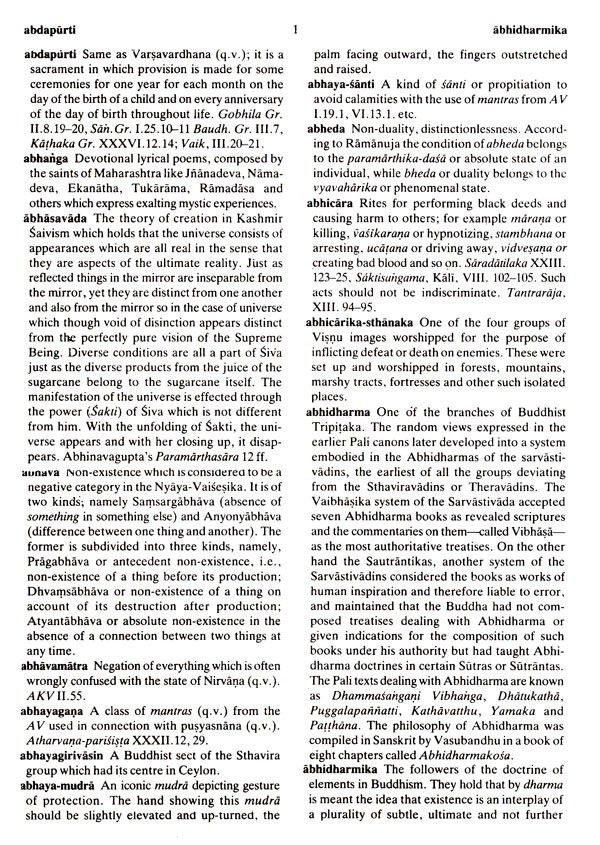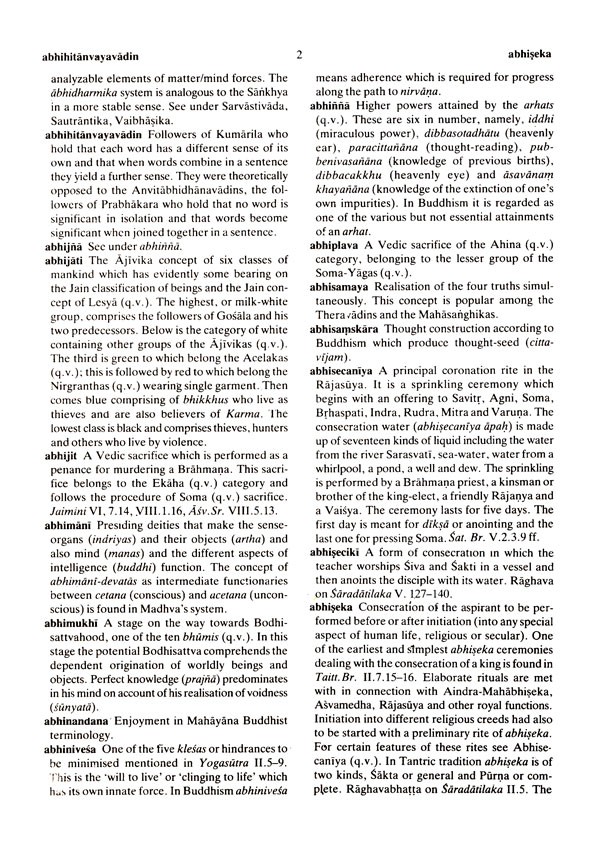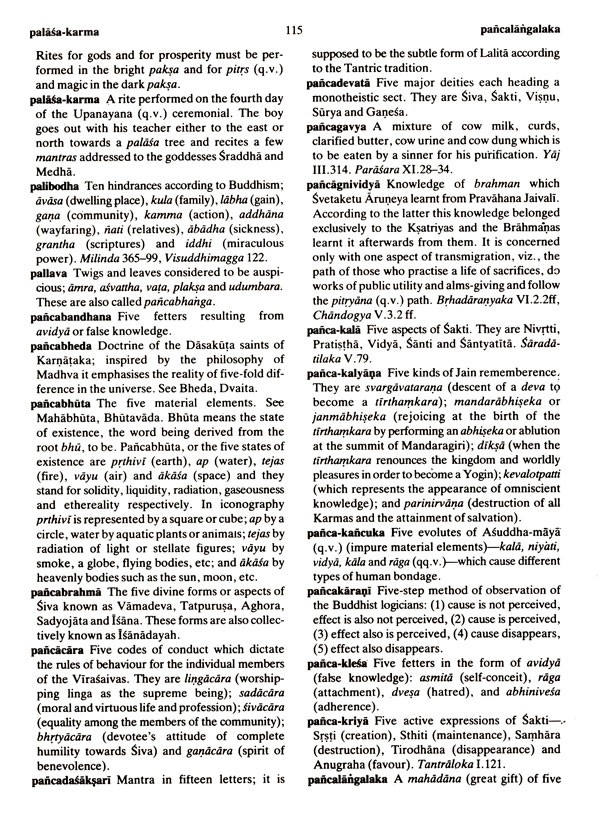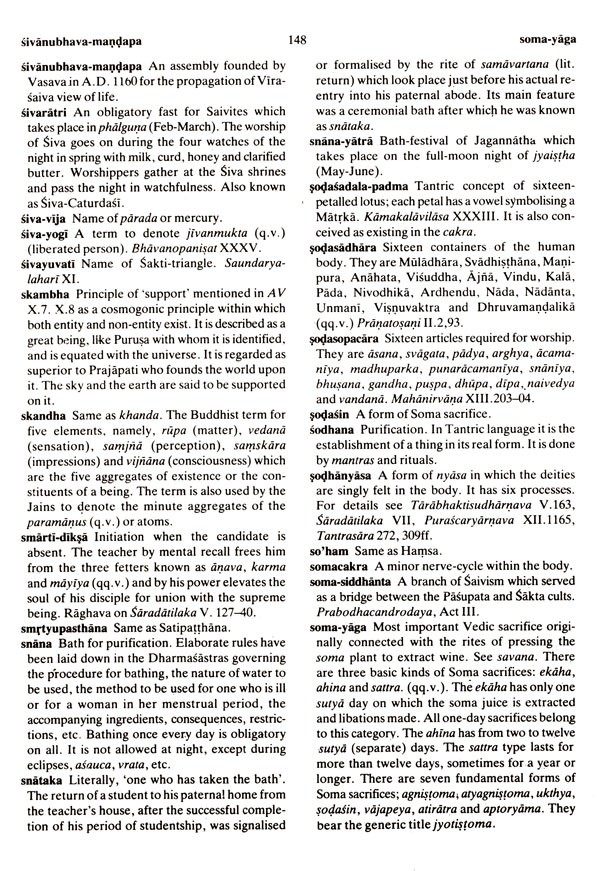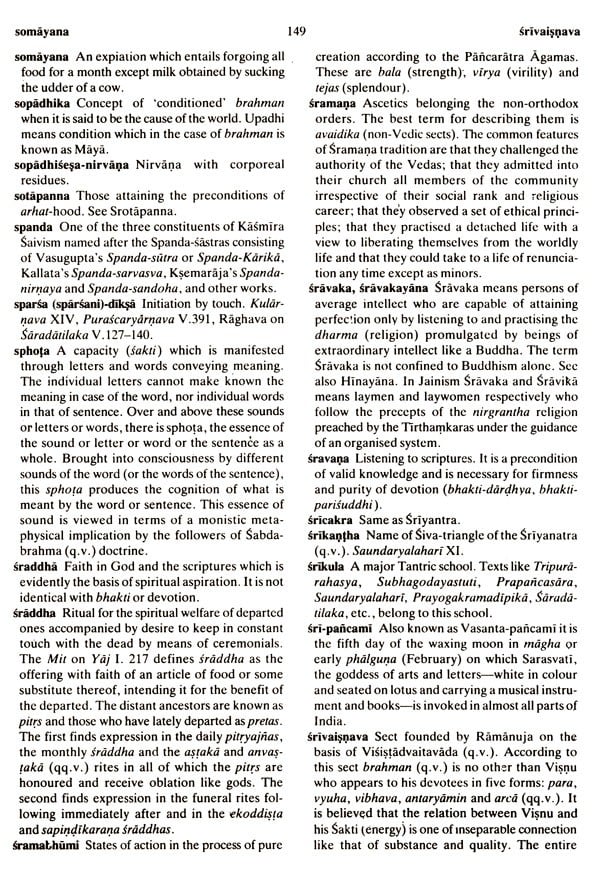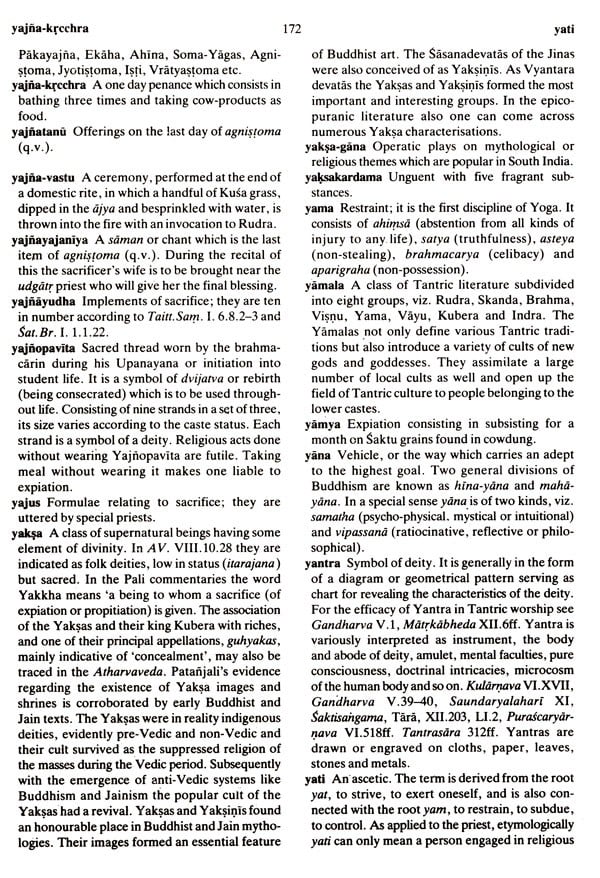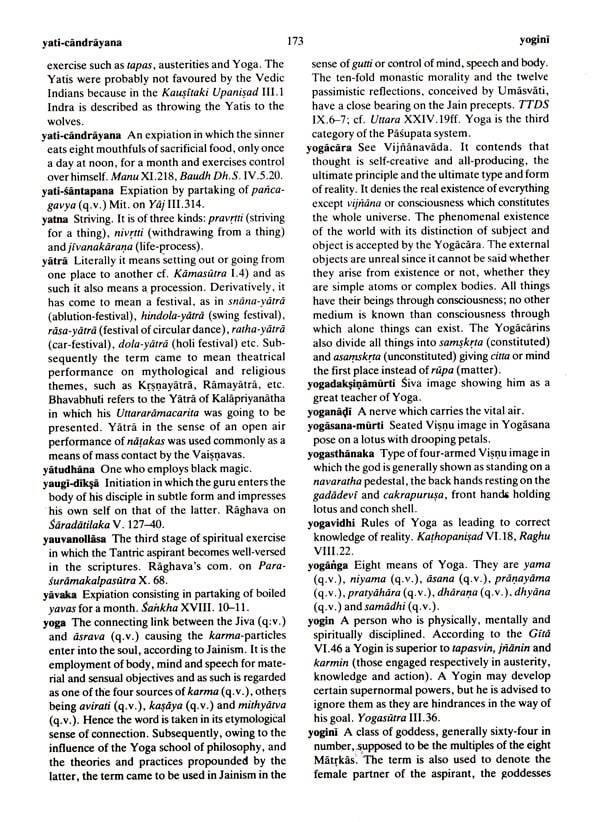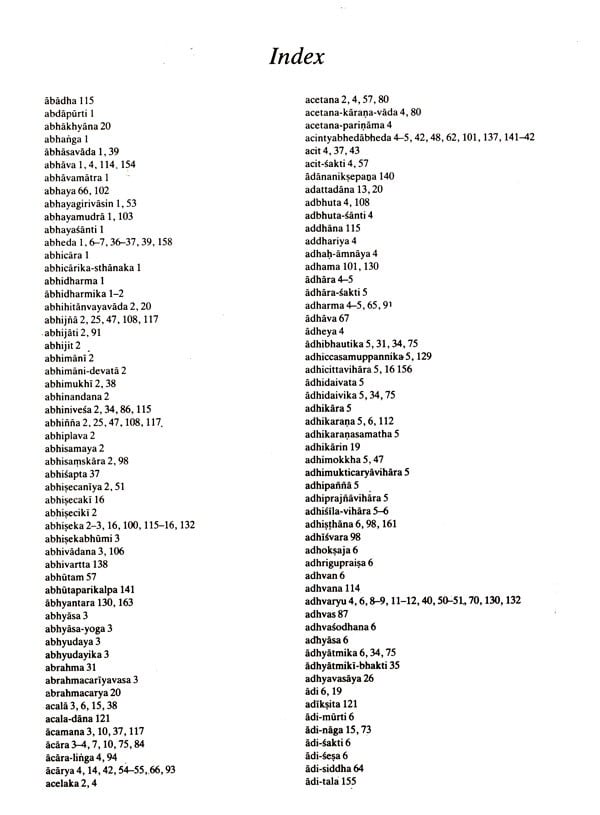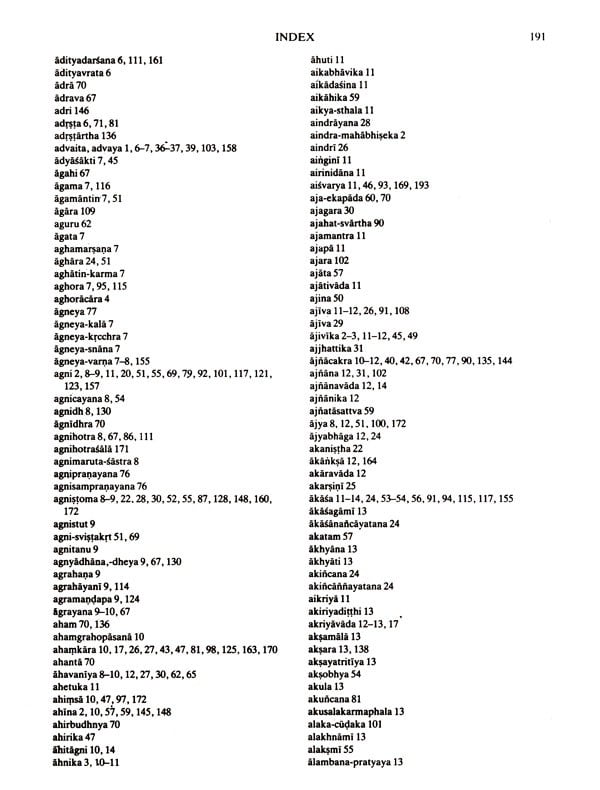
A Glossary of Indian Religious Terms and Concepts
Book Specification
| Item Code: | AZB532 |
| Author: | Narendra Nath Bhattacharyya |
| Publisher: | Manohar Publishers and Distributors |
| Language: | English |
| Edition: | 1999 |
| ISBN: | 9788185054858 |
| Pages: | 252 |
| Cover: | HARDCOVER |
| Other Details | 10.8 x 8.8 inches |
| Weight | 912 gm |
Book Description
The development of each religious system of India being largely conditioned by its inter-connections and contradictions with others, it can be properly understood only when the vast terminological resources of each system with their many-sided suggestivity are diligently worked out from a comparative point of view. The present Glossary therefore seeks to explain the basic significance of various terms and concepts which characterize different religious systems of India and also to point out that an in-depth study of religious terminology is likely to prove the common origin of all the systems which are specifically different in their functional aspects but are generically alike. The logical, epistemological and metaphysical terms and concepts, as also those pertaining to the ritual and other aspects of religious life, originated from one primary source and these were adopted in all the religio-philosophical systems of India with necessary modifications.
In view of the vastness of the material, only the more important terms have been included. However, a detailed index has been provided for cross-referencing as also for terms not included in the Glossary as separate entries. In all such cases their meanings have been furnished.
The introductory portion deals with the sources along with a brief history of lexical and terminological studies and the various problems involved therein. A detailed bibliography has also been provided.
As an Indologist, Dr.N.N. Bhattacharyya requires no introduction. He is the author of such well-known works as The Indian Puberty Rites (1968, 1980), Indian Mother Goddess (1970, 1977), History of Cosmogonical Ideas (1971), History of the Sakta Religion (1978, 1996), History of Indian Erotic Literature (1975), Ancient Indian Rituals and their Social Contents (1975, 1996), Jaina Philosophy (1976, 1998), History of Researches on Indian Buddhism (1981), Buddhism in the History of Indian Ideas (1993), Indian Religious Historiography (1996), History of the Tantric Religion (1982, 1999), The Geographical Dictionary: Ancient and Early Medieval India (1991), etc.
He has edited R.P. Chanda's Indo Aryan Races and N.C. Bandyopadhyay's Development of Indian Polity. He has also edited Medieval Bhakti Movements in India (1989), Jainism and Prakrit in Ancient and Medieval India (1994), and Encyclopaedia of Ancient Indian Culture (1998).
A retired professor of Calcutta University Dr. Bhattacharyya presided over the Ancient India section of the Indian History Congress in 1992.
Prof. Suniti Kumar Chatterji told us that once while he was in France he was shown a machine which could translate English into French and French into English. Out of curiosity. he wanted to have the French version of the English phrase 'out of sight, out of mind' which the machine did instantly. Then, caught by a naughty idea, he wanted to have once again the English rendering of what he had received in French. This time the machine yielded 'blind and insane’. This story might have been a joke intended to amuse us. But the joke is really instructive, for it shows how difficult it is to translate the inner significance of one language into another. A particular expression of one language, when translated literally, cannot yield the same in another language. The problem becomes more complicated when the religious terms and concepts of one language are required to be translated into another. Apart from the usual difficulties with which one is generally confrontedsuch as the deceptive character of etymological meaning, the symbolic significance of words, the cases of arthaviparyaya or reversal of meaning, the archaic nature of language, the time-gap between the period of the formation of the texts and that of the composition of their commentaries, the divergences of interpretations and so forth—there are others which may be called 'internal and are required to be discussed in some detail (See Introduction).
The Western Indologists and their Indian counterparts undoubtedly rendered commendable service by editing, translating and interpreting the ancient religious texts as a result of which new horizons have been opened in the field of religious studies. But at the same time one should admit that, notwithstanding their sincere attempts, their vision was circumscribed by the outlook they inherited from their own culture and tradition. In most cases they interpreted the Indian religio-philosophical terms in close dependence on those of the West. But it will be wrong to say that they were indifferent to such problems. They did their best by applying all the existing methods to arrive at the original and the secondary meanings of the word. Still in many cases some kind of superficial rendering could not be avoided, and it is not possible even now. The impact of Western education has made everyone so accustomed to Western terms and concepts that it has now almost become impossible to stand squarely on pure Indian tradition. Even admitting that the Western scholars had their traditional cultural preoccupations which had influenced them while rendering Indian terminology in their own languages, one cannot overlook the ambivalence inherent in the Indian tradition itself.
In order to illustrate the situation we may refer to the term Yajña, which has always been vaguely translated as 'sacrifice,' meaning 'the slaughter of animals or the surrender of a possession to a god for the purpose of pleasing him'. Behind such a rendering must have worked the impact of the Biblical legend of Abraham's sacrifice of his own son to appease God—a legend with which the Western scholars were traditionally accustomed. Although this interpretation is fallacious, the same was also held by a good number of early Indian authorities. Sabara had to make an enormous intellectual exercise to convince his contemporaries that the Yajña had nothing to do with the propitiation of gods, since they had no ownership of worldly objects and were utterly incapable of bestowing them on the performer, and that Yajña was the means of yielding puruṣārtha—that which was achieved through human effort. This shows that the significance of Yajña was misunderstood even in remote antiquity. So there is no need of blaming modern scholars and their interpretation's. Another problem was that the meaning of certain words underwent changes from time to time. For example, the word darśana, which originally meant 'perception,' was used by Haribhadra, Madhava and others in the sense of philosophy'; despite the warning of modern interpreters like Dasgupta or Radhakrishnan that the Indian concept of darśana should not be confused with the Western concept of 'philosophy’. In this case the ancients did not oblige the moderns.
The compiler of the present Glossary does not have even the slightest pretension to solve the problems outlined above, but rather has depended solely on the meanings suggested by the lexicographers and the interpretations made by modern scholars, both Western and Indian. Still, as a life-long student of Indian religious history he feels that some of these problems could have been solved if the approach be not wholly one-sided and if the vast indigenous theological and dogmatic tradition, enriched and explained by teachers of various sects and creeds, be taken into account. The question of one-sidedness in approach requires a little clarification. Scholars who had taken up various aspects of Indian religion as the subject of their study were more interested in the dissection of the constituents and in finding out the processes through which they were assembled in various shapes in different historical periods than to understand the system in its totality. They displayed wonderful knowledge in literature, epigraphy, palaeography, numismatics, art, architecture, iconography and allied disciplines required for historical researches on religion, but they did not care to kno' religion in itself; to understand what a particular creed along with all its intricacies really meant to its followers; or to appreciate the logic which conditioned and justified even the most strange and unintelligible beliefs and practices associated with different systems.
The purpose of the present Glossary is purely utilitarian. It is meant not for the specialists, but for the beginners. Scholars of the past wrote for scholars only. The celebrated earlier authors on Indian religious systems, whose works have now acquired the status of classics, did not bother about the indiscriminate use of terms and concepts in original which they thought their cultivated readers were competent enough to understand. But now, when that 'golden age' is no more, when the 'classics’ are going beyond the reach of ordinary readers and, at the same time, when owing to some sort of democratisation in the field of education persons are increasingly attracted to the study of Indian religious systems, some sort of a guide-book is necessary to convey to them an elementary idea of Indian religious terms and concepts. So far as the entries are concerned the author of the present volume has to be selective because it is not possible to incorporate everything within a given space. But a detailed index has been provided not only for cross-references but also for many other terms which could not be included within the main body of the Glossary as separate entries, and in all such cases their meanings have also been supplied. The introductory portion deals with the sources along with a brief history of lexical and terminological studies. A detailed bibliography has also been supplied.
**Contents and Sample Pages**

